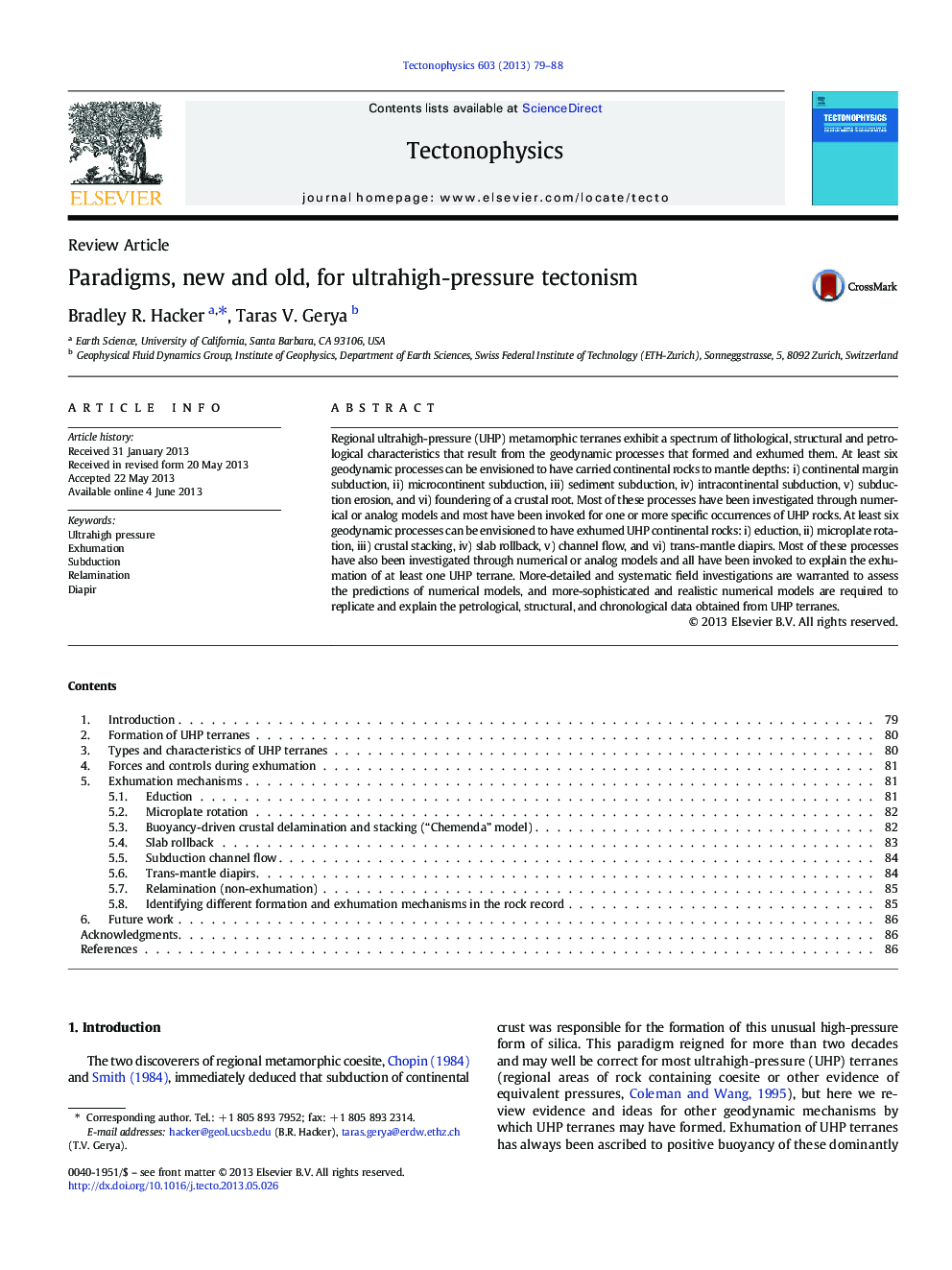| کد مقاله | کد نشریه | سال انتشار | مقاله انگلیسی | نسخه تمام متن |
|---|---|---|---|---|
| 4692192 | 1636784 | 2013 | 10 صفحه PDF | دانلود رایگان |
• Ultrahigh-pressure rocks may be formed and exhumed by a variety of processes.
• Continental margins, microcontinents, sediment, and crustal roots may all reach UHP.
• Plate eduction, rotation, stacking, and rollback may all exhume UHP rocks.
• Non-plate channel flow and trans-mantle diapirs may also exhume UHP rocks.
Regional ultrahigh-pressure (UHP) metamorphic terranes exhibit a spectrum of lithological, structural and petrological characteristics that result from the geodynamic processes that formed and exhumed them. At least six geodynamic processes can be envisioned to have carried continental rocks to mantle depths: i) continental margin subduction, ii) microcontinent subduction, iii) sediment subduction, iv) intracontinental subduction, v) subduction erosion, and vi) foundering of a crustal root. Most of these processes have been investigated through numerical or analog models and most have been invoked for one or more specific occurrences of UHP rocks. At least six geodynamic processes can be envisioned to have exhumed UHP continental rocks: i) eduction, ii) microplate rotation, iii) crustal stacking, iv) slab rollback, v) channel flow, and vi) trans-mantle diapirs. Most of these processes have also been investigated through numerical or analog models and all have been invoked to explain the exhumation of at least one UHP terrane. More-detailed and systematic field investigations are warranted to assess the predictions of numerical models, and more-sophisticated and realistic numerical models are required to replicate and explain the petrological, structural, and chronological data obtained from UHP terranes.
Journal: Tectonophysics - Volume 603, 9 September 2013, Pages 79–88
